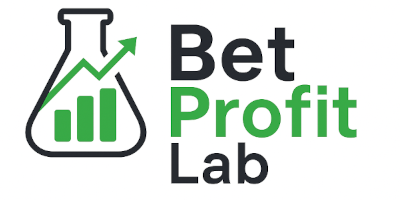When it comes to sports betting, managing your bankroll is just as important as picking the right teams. Two of the most popular bankroll strategies used by bettors are Flat Betting and the Kelly Criterion. Both aim to optimize your returns, but they operate on very different principles. In this article, we’ll break down how each system works, their pros and cons, and which one might be the best fit for your betting style.
Flat Betting vs. Kelly Criterion: Which Bankroll Strategy Works Best?
What is Flat Betting?
Flat betting is a straightforward system where you wager the same amount on every bet, regardless of the odds or your confidence in the outcome. For example, if your bankroll is $1,000 and you decide to risk 2% per bet, you’d wager $20 on each bet—no more, no less.
Pros:
-
Easy to understand and implement
-
Limits risk of large losses
-
Encourages discipline and consistency
Cons:
-
Doesn’t maximize returns on high-confidence bets
-
Can be slow to grow your bankroll
-
Doesn’t adapt based on winning/losing streaks
What is the Kelly Criterion?
The Kelly Criterion is a more dynamic and mathematical strategy. It calculates the optimal bet size based on the perceived edge you have over the bookmaker. The formula is:
Kelly % = (bp – q) / b
Where:
-
b is the decimal odds minus 1 (e.g., 2.50 odds → 1.50)
-
p is your estimated probability of winning
-
q is the probability of losing (1 – p)
This method allows you to bet more when you believe you have a significant edge and less when your edge is small.
Pros:
-
Maximizes long-term bankroll growth
-
Adjusts bet size based on value
-
Mathematically proven to be optimal under certain conditions
Cons:
-
Requires accurate probability estimation
-
Can lead to large variance and aggressive bankroll swings
-
More complex and requires calculations
Real-World Example
Let’s say you have a $1,000 bankroll.
Flat Betting Example:
You bet $20 per game, win 55% of the time with 2.00 odds.
After 100 bets:
-
Wins: 55 → $1,100
-
Losses: 45 → $900
-
Net Profit: $200
Kelly Criterion Example:
Let’s assume you estimate a 60% chance of winning at 2.00 odds.
Kelly suggests you bet 20% of your bankroll.
-
First bet: $200 → win → bankroll is now $1,200
-
Second bet: 20% of $1,200 = $240, and so on…
The returns compound much faster—but if your probability estimate is wrong, you can lose big too.
Which One Should You Use?
It depends on your risk tolerance and skill level.
✅ Use Flat Betting if:
-
You’re a beginner
-
You want to avoid volatility
-
You don’t trust your ability to estimate probabilities
✅ Try Kelly Criterion if:
-
You’re confident in your handicapping skills
-
You want to maximize long-term gains
-
You can handle bankroll swings and variance
Some bettors even use a “Half-Kelly” or “Fractional Kelly” approach to reduce risk while still gaining from Kelly’s advantages.
Flat Betting vs. Kelly Criterion: Which Bankroll Strategy Works Best?
There’s no one-size-fits-all answer when it comes to bankroll management. Both Flat Betting and the Kelly Criterion have their merits. The key is to choose a strategy that fits your betting goals and psychology. If you’re looking for consistency and simplicity, Flat Betting may be your best friend. If you’re in it for long-term growth and understand value betting deeply, Kelly Criterion might be the smarter choice.
No matter which strategy you go with, discipline and consistency will always be the real winning formula.

